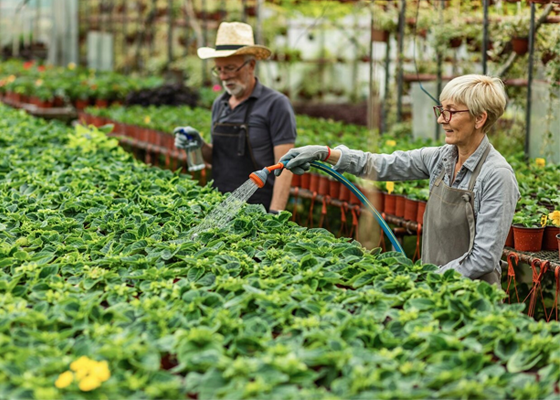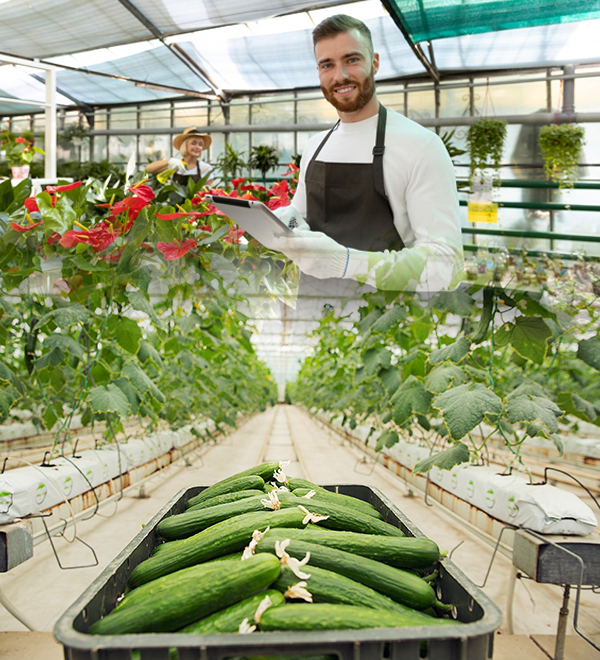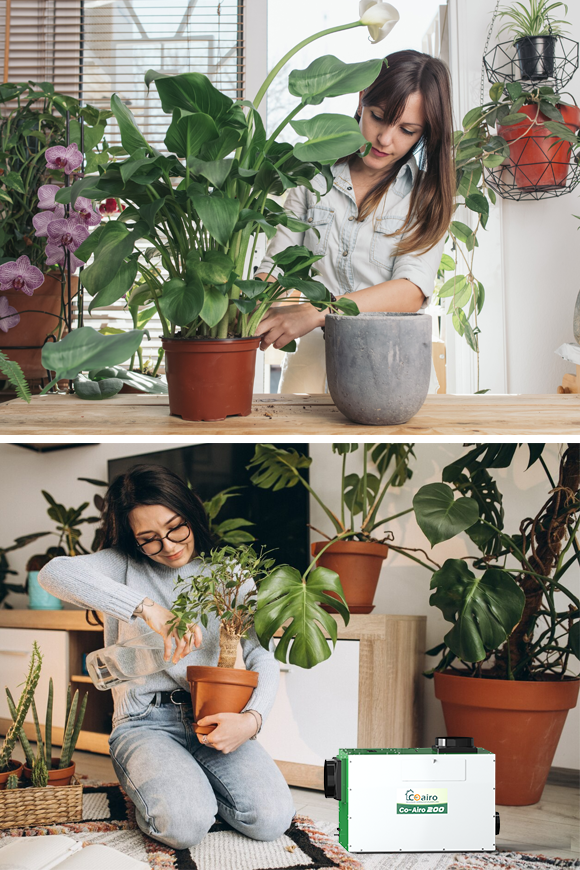
How to Provide a Comfortable Environment for Indoor Plants?
When environmental conditions aren’t controlled properly, indoor plants lose more than 90% of their water through transpiration. If you need to ensure an ideal environment for smooth growth. Creating a perfect environment requires careful attention to multiple factors that directly influence plant vitality and health.
Maintaining precise control over indoor humidity, temperature, and airflow ect. is your key to indoor cultivation success. So, whether you are a hobby or professional grower, you need to know how to control these factors.
Let’s find out in detail the common cultivation room problems, and how to create an ideal living environment for plants.
Introduction to Indoor Cultivation and Its Importance
Modern tools and technologies are transforming the way plants are grown. Indoor cultivation helps you overcome traditional challenges such as seasonal limitations, unpredictable temperatures, and pest issues.
Whether you are growing vegetables or ornamental plants, you can maintain suitable conditions for the specific types of plants by maintaining the required airflow, temperature, and humidity. That said, maintaining an optimal indoor environment is challenging in most cases.
Fluctuating temperatures, excess moisture, and poor airflow hinder plant growth and yields. As a successful grower, you should focus on creating a conducive setting using solutions. These include ventilation exhaust fans, dehumidifying machines, and temperature control systems.


Common Cultivation Room Problems
Plants in indoor environments frequently face critical challenges that impact their growth and health. These challenges not only result in weak growth patterns but also seriously hamper yields. For proper indoor plant growth, you need to identify the unique indoor challenges. These include excess moisture, poor airflow, temperature changes, and poor air quality.
1. Excess Humidity
Do you know most of the water plants absorb does not reach their leaves? They release most of their water through a process called transpiration. This means this water enters your indoor air which causes humidity in cultivation rooms to skyrocket.
This spike in humidity leads to several problems such as mildew, and mold growth. Also, the excess moisture leads to plant diseases like root rot. The larger your grow room is, the greater the losses. Avoid plant damage, a dehumidification system maybe able to help you!
2. Poor Airflow
Poor air circulation also causes severe problems in cultivation rooms. The stagnant air in such spaces hampers the plant respiration process. Plants take in oxygen and release carbon dioxide during the night. They use this carbon dioxide during the day for photosynthesis.
Inadequate air circulation hinders the even distribution of CO2 through the cultivation room. So, this makes it difficult for plants to get the right amount of CO2 they need for photosynthesis. Besides, poor airflow triggers fungal growth in the cultivation rooms.
3. Low Air Quality
Poor indoor air quality also negatively impacts the plant’s health and growth. The airborne pollutants such as pathogens and harmful chemical particles settle on the surface of soil or plant leaves. This hinders photosynthesis, causes diseases, and weakens overall plant health.
4. Temperature Changes
Specific plants thrive within certain temperature ranges. Drastic changes in temperatures disturb the growth cycles, particularly for highly sensitive species. Therefore, you need to be attentive in case of unusual temperature changes to protect your plants from potential damage.

How to Create an Ideal Living Environment for Plants
For healthy and productive plants, you need to create an ideal living environment for your indoor plants. Doing so ensures better yields and peace of mind. Don’t worry you can achieve this using specific tools.

1. Control Humidity Whole-House Dehumidifiers
Typically, you need to maintain a humidity level between 40% and 60% for most plants. You can achieve this range in multiple ways. One of the easiest and smoothest ways is to use a high-duty dehumidifying machine.
For instance, a whole-house dehumidifier does wonders in achieving your desired level of humidty in a wide range of applications including cultivation rooms. This machine is extremely effective at removing excess moisture, improving air quality, and ensuring a comfortable environment for your indoor plants.
The benefits of using such a device are many. It reduces the risk of mildew and mold buildup, protects plants from diseases caused of excess humidity, and ensures a healthy environment conducive to better quality and better yields.
2. Improve Airflow with Ventilation Exhaust Fans
Besides moisture control, proper air circulation is equally important for your plant’s health and productivity. To ensure adequate airflow in your cultivation room, solutions such as exhaust fans are extremely helpful.
You can use different types of ventilation fans in your room based on your needs. For example, an inline duct fan helps distribute fresh air evenly throughout your cultivation room. This way, all plants receive a fair amount of carbon dioxide required for photosynthesis.
Another helpful fan type is a shutter exhaust fan. This type of fan effectively throws out humid, stale air outside your grow room. This reduces the risks of fungal growth and heat accumulation in your room.
Ventilation exhaust fans also help maintain clean indoor air as they expel stale air which contains pollutants, dust, and pathogens.
3. Maintain Consistent Temperature
Ventilation and exhaust fans ensure stable temperatures when used with dehumidifiers. This temperature stability is inevitable for your plant’s health and productivity.
Conclusion
How to provide a comfortable environment for indoor plants? For proper indoor cultivation, you need to address certain problems high humidty, fluctuating temperatures, and inadequate air circulation. Understanding these factors helps you implement the right environmental controls.
High humidity is a major concern. Therefore, you need a heavy-duty solution particularly if you are dealing with large cultivation rooms. A whole–house dehumidifier is an effective solution for such applications. Other solutions include using ventilation fans to ensure proper air circulation in your space. Remember, you must choose the tools that best fit your grow rooms.
Investing in high-quality tools helps you easily maintain a comfortable environment for indoor plants Moreover, when you carefully choose the right tools for your cultivation room, it will result in greater yield and better quality.